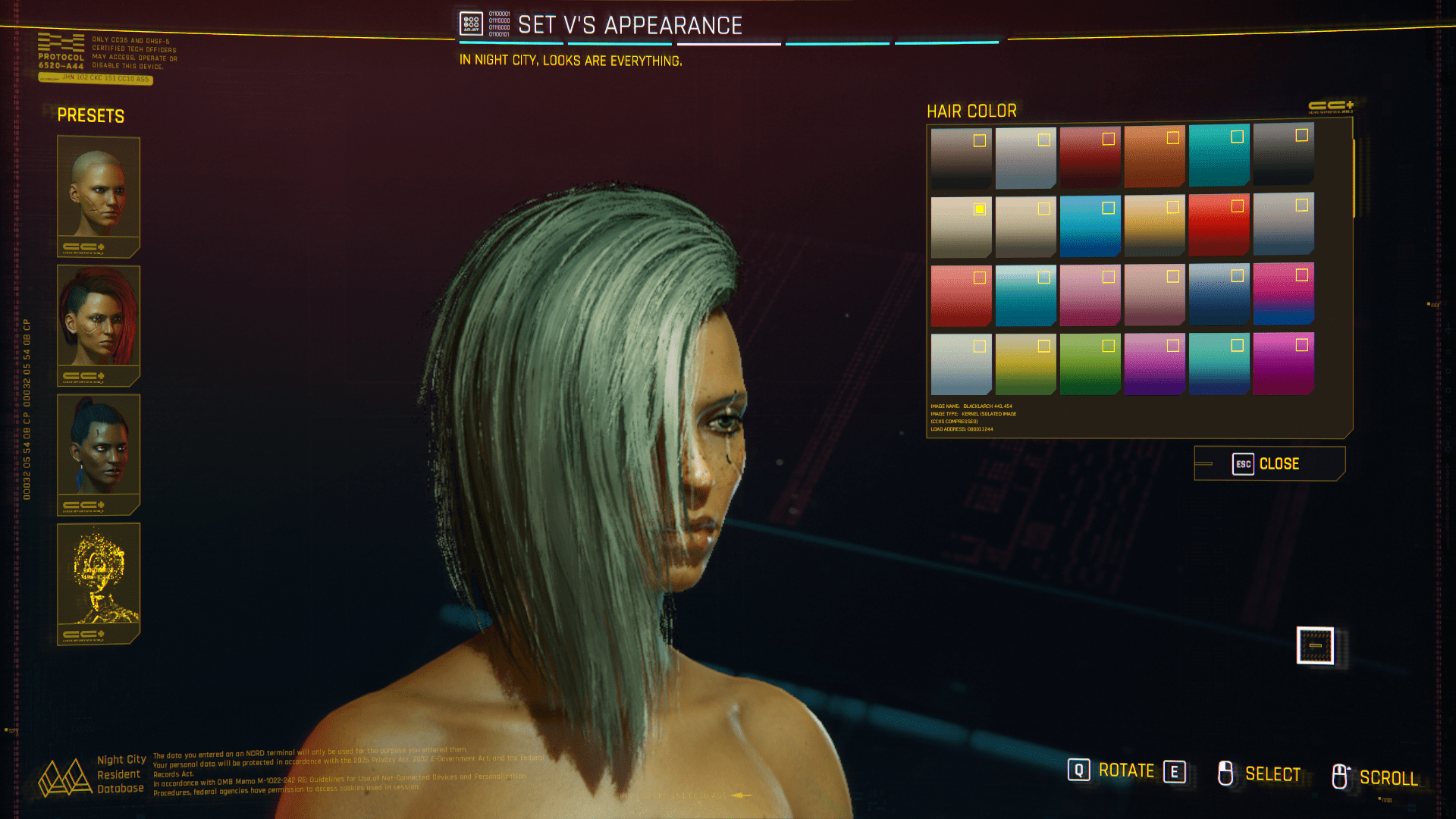Docker uses storage drivers to store image layers, and to store data in the writable layer of a container. The container's writable layer does not persist after the container is deleted, but is suitable for storing ephemeral data that is generated at runtime. Storage drivers are optimized for space efficiency, but write speeds are lower than native file system performance, especially for storage drivers that use a copy-on-write filesystem. Write-intensive applications, such as database storage, are impacted by a performance overhead, particularly if pre-existing data exists in the read-only layer.
Unsigned upload options are controlled by an upload preset, so in order to use this feature you first need to enable unsigned uploading for your Cloudinary account from the Upload Settings page. Enabling unsigned uploading also creates an upload preset with a unique name, which explicitly allows uploading of assets without authentication. The preset is also used to define which upload options will be applied to assets that are uploaded unsigned with that preset specified.
You can edit the preset at any point in time to define the parameters that will be used for all assets that are uploaded unsigned from user browsers or mobile applications. For more information on upload presets, see the upload preset documentation and the Centralized control for image upload blog post. In development mode—python manage.py runserver—Django searches for static files using the STATICFILES_FINDERS setting.
By default, it tries to find the requested static file in folders listed in the STATICFILES_DIRS setting. In case of failure, Django tries to find the file using django.contrib.staticfiles.finders.AppDirectoriesFinder, which looks in the static folder of every installed application in the project. This allows you write reusable applications which are shipped with their own static files.
If you're using function-based views, the easiest way to restrict access to your functions is to apply the login_required decorator to your view function, as shown below. If the user is logged in then your view code will execute as normal. If the user is not logged in, this will redirect to the login URL defined in the project settings (settings.LOGIN_URL), passing the current absolute path as the next URL parameter.
If the user succeeds in logging in then they will be returned back to this page, but this time authenticated. I've recently lost some files in my media folder, and I want to delete the image field/FileField objects whose files have been removed, across all models of my application. In production, you serve your static using a standalone web server like Nginx. The web server knows nothing about the Django project applications structure or which folders your static files are distributed in. This allows for resolution of static file resources using the same logic as Django development mode server and has all static files in one place for your web server.
First at the project-level config/urls.py files we need to add imports for settings, include, and static. Note we also need to add the MEDIA_URL if settings are in DEBUG mode, otherwise we won't be able to view uploaded images locally. Cloudinary provides a secure and comprehensive API for easily uploading media files from server-side code, directly from the browser or from a mobile application. You can either upload using Cloudinary's REST API or one of Cloudinary's client libraries , which wrap the upload API and simplify integration with web sites and mobile applications.
Once uploaded, you can manage your assets using the Admin API and automatically deliver them, applying smart optimizations and transformations. Of the three methods, LMDB requires the most legwork when reading image files back out of memory, because of the serialization step. Let's walk through these functions that read a single image out for each of the three storage formats. If you are using a database that does not support transactions you may lose files if a transaction will rollback at the right instance.
This outcome is mitigated by our use of post_save and post_delete signals, and by following the recommended configuration below. This outcome will still occur if there are signals registered after app initialization and there are exceptions when those signals are handled. In this case, the old file will be lost and the new file will not be referenced in a model, though the new file will likely still exist on disk. If you are concerned about this behavior you will need another solution for old file deletion in your project. Now we'll add a view for getting the list of all books that have been loaned to the current user. We'll use the same generic class-based list view we're familiar with, but this time we'll also import and derive from LoginRequiredMixin, so that only a logged in user can call this view.
We will also choose to declare a template_name, rather than using the default, because we may end up having a few different lists of BookInstance records, with different views and templates. We will create a new virtual environment, activate it, and install both Django and pillow which is the Python image process library Django relies on for image files. Django treats static files—images, CSS and JavaScript—different than templates. You've seen evidence of how various storage methods can drastically affect read and write time, as well as a few pros and cons of the three methods considered in this article.
While storing images as .png files may be the most intuitive, there are large performance benefits to considering methods such as HDF5 or LMDB. Make sure the Python and Django versions are capable of the Django cleanup version you use. On the command line, navigate there and create a directory upload for our files. We will use Pipenv to install both Django and pillow which is a Python image process library Django relies on for image files. Finally activate our new virtual environment with the shell command.
The default value for the upload method resource_type is image, so you must set the resource_type parameter when uploading videos. The public ID value for images and videos asset types should not include the file extension. Character in a public ID, that simply becomes part of the ID itself. The format of a media asset is appended to the public_id when it is delivered. For example, if you specify myname.mp4 as the public_id, then the image would be delivered as myname.mp4.mp4. We have some user-generated files like user profile pictures etc.
Here is the code that I am using in my Django project settings file. In order to tell whether or not a FileField's value has changed a local cache of original values is kept on the model instance. If a condition is detected that should result in a file deletion, a function to delete the file is setup and inserted into the commit phase of the current transaction. I've tried django-cleanup, but it appears to be doing the inverse operation, i.e. deleting files on the server whose objects have been removed from the database. First of all, all libraries support reading images from disk as .png files, as long as you convert them into NumPy arrays of the expected format. This holds true for all the methods, and we have already seen above that it is relatively straightforward to read in images as arrays.
Presumably, you have them already on disk somewhere, unlike our CIFAR example, so by using an alternate storage method, you are essentially making a copy of them, which also has to be stored. Doing so will give you huge performance benefits when you use the images, but you'll need to make sure you have enough disk space. Does anyone know of a systematic/programmatic way to sort through ALL the images and compare them to the relevant MySQL fields, deleting any image which DOESN'T have a match from the filesystem? In the perfect world I'm imagining a button in the django-admin like "Clean-up unused media" which executes a python script capable of this behavior.
I'll be sharing whatever my eventual solution is here, but what I'm looking for right now is anyone who has ideas, knows resources, or has done this at some point themselves. This feature is very useful for lazy migration of media assets from a remote location to your Cloudinary account with minimal effort on your side. The Cloudinary jQuery library supports using a delete token to delete assets on the client side for a limited time of 10 minutes after being uploaded. After 10 minutes have passed, the image cannot be deleted from the client side, only via the Destroy method of the Upload API or using the delete_resources method of the Admin API.
The upload samples shown in the sections above allow your code to upload files to Cloudinary. In this flow, if you have a web form that allows your users to upload media files, the file data is first sent to your server and only then uploaded to Cloudinary. Note that for simplicity, many of the examples in this guide demonstrate uploading an image file. If you use these code examples as the basis for your own video or raw file uploads, don't forget to add the resource_type option. The auto value is especially useful when you don't know what type of files your users will upload, or if you are uploading multiple files of different asset types with the same settings.
When using auto as the resource_type along with other upload options, only the upload options relevant to a particular asset type are applied. Any options that work only with a different asset type are silently ignored. The code below creates mediafiles and staticfiles folder in my project directory.
On the front end, it uploads and serves the file correctly but user profile pictures are gone after every deployment. Does anyone know of a systematic/programmatic way to sort through ALL the images and compare them to the relevant MySQL fields, deleting any image which DOESN'T have a match from the filesystem? In the perfect world I'm imagining a button in the django-admin like "Clean-up unused media" which executes a python script capable of this behavior. I'll be sharing whatever my eventual solution is here, but what I'm looking for right now is anyone who has ideas, knows resources, or has done this at some point themselves.
This allows you use it multiple times from multiple sources (admin interface UI, front-end UI, API endpoints, multiple views) in a few lines of code instead of copy-pasting tons of code. So next time you're sending a user an email, extend the model with an email function instead of writing this logic in your controller. CBVs are generic views that provide abstract classes implementing common web development tasks built by professionals and covering all common behaviors. They have an amazing structured API, and you can use all of the advantages of object-oriented programming when you use CBVs.
Forget the pain of using Django standard view functions for listings, CRUD operations, forms processing, etc. You just extend the suitable CBV for your view and override class properties or functions which configure the view behavior. Django's killer feature is a powerful configurable admin interface which builds automatically (automagically?) from your models' schema and admin panel models, making you feel like a wizard.
I believe every application requires an admin panel—if not yet, it's simply a matter of time until your basic application needs one. With Django admin, you can create one quickly and flexibly. Hosting this site in production would require a few additional steps. Notably, it's likely that you would use WhiteNoise on the server for your static files, however WhiteNoise explicitly does not support media files.
The common practice is to use django-storages for this purpose and connect to something like S3. The django-cleanup app automatically deletes files for FileField, ImageField and subclasses. When a FileField's value is changed and the model is saved, the old file is deleted. When a model that has a FileField is deleted, the file is also deleted. A file that is set as the FileField's default value will not be deleted.
This document describes Django's file access APIs for files such as those uploaded by a user. The lower level APIs are general enough that you could use them for other purposes. If you want to handle "static files" (JS, CSS, etc.), see How to manage static files (e.g. images, JavaScript, CSS). This template is very similar to those we've created previously for the Book and Author objects.
The only thing "new" here is that we check the method we added in the model (bookinst.is_overdue) and use it to change the color of overdue items. Using render() is so common that Django added it to the views.py file for you when startapp created the events app . If Docker had to make an entire copy of the underlying image stack each time it created a new container, container create times and disk space used would be significantly increased. This would be similar to the way that virtual machines work, with one or more virtual disks per virtual machine. The vfs storagedoes not provide a CoW filesystem or other optimizations. When using this storage driver, a full copy of the image's data is created for each container.
Copy-on-write is a strategy of sharing and copying files for maximum efficiency. If a file or directory exists in a lower layer within the image, and another layer needs read access to it, it just uses the existing file. The first time another layer needs to modify the file , the file is copied into that layer and modified. This minimizes I/O and the size of each of the subsequent layers. Each layer is only a set of differences from the layer before it. Note that bothadding, and removing files will result in a new layer.
In the example above, the $HOME/.cache directory is removed, but will still be available in the previous layer and add up to the image's total size. Refer to theBest practices for writing Dockerfilesand use multi-stage buildssections to learn how to optimize your Dockerfiles for efficient images. In this section, we have a template for the list and an upload form. The form must have enctype attribute set to multipart/form-data and method set to post to make upload to Django possible.
You have seen the code for using the various storage methods to save a single image, so now we need to adjust the code to save many images and then run the timed experiment. In all realistic applications, you also care about the meta data attached to the image, which in our example dataset is the image label. When you're storing images to disk, there are several options for saving the meta data. Because all objects in your S3 bucket incur storage costs, you should delete objects that you no longer need. For example, if you are collecting log files, it's a good idea to delete them when they're no longer needed. You can set up a lifecycle rule to automatically delete objects such as log files.
For more information, see Setting lifecycle configuration on a bucket. Cloudinary currently supports 3D models in the FBX, glTF and OBJ formats that are uploaded as a single ZIP file, including any textures or other images used in the model. After exporting the 3D model in one of the supported formats to a new folder, zip the entire folder and then upload it to your Cloudinary account. To perform an authenticated request, you need to call a server-side component to generate a signature using your API secret, which should never be exposed on the client side.
Having obtained the signature and timestamp from your server, you can use similar code to the above unauthenticated example, just appending your API key, timestamp and signature to formData. See signed-uploads/public/js/uploadclientform.js in the following example. See Generating authentication signatures for more details. A more efficient and powerful option is to allow your users to upload assets directly from the browser or a mobile application instead of going through your servers. This method allows for faster uploading and better user experience for your visitors. It also reduces load from your servers and reduces the complexity of your applications.
You can upload assets as private to restrict access to the original asset and only allow access to derived versions of the asset. The original asset can be accessed only with a signed URL, but by default, all derived versions of the asset are accessible. You can further restrict access to the derived asset by activating the Strict Transformations mode. With Strict Transformations enabled, you need to either eagerly generate all derived assets, mark specific transformations as allowed or use signed URLs. Any file that is not an image or video file is treated as a 'raw' file.


























